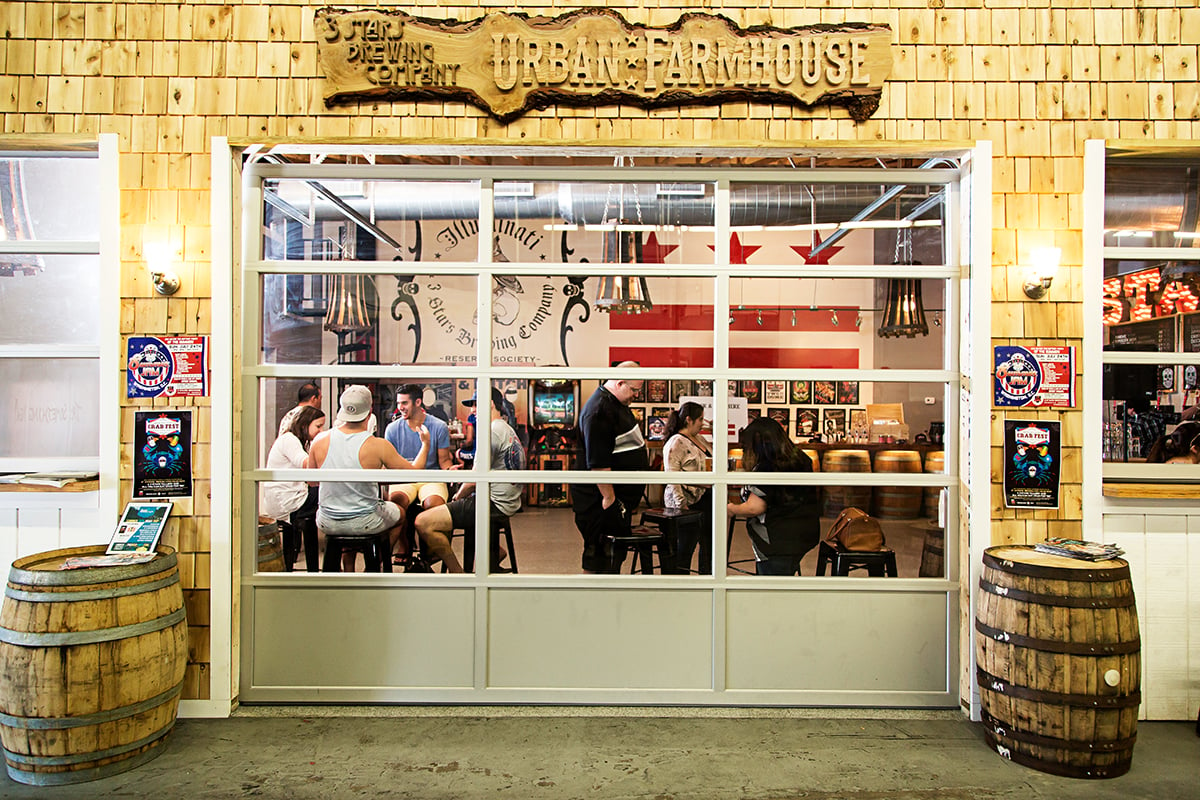The artist calls it the “20-second scan.” He knows it well from the seven years he spent in New York watching art patrons hop from gallery to gallery, looking at art as if channel-surfing: That’s old hat. Click. Saw that at the Whitney last year. Click.
Working in the basement studio of his upper-Northwest DC home, Robin Rose takes it for granted that his abstract paintings will get the scan. So he tries to imbue each of his multilayered, richly textured encaustic works with a mysterious quality that does not take kindly to the glance.
“You scan it, you get nothing,” says Rose, 59, a Florida native whose work is seen as having roots in the Washington Color School.
In fact, Rose, who takes a philosophical, almost spiritual approach to his work, says his monochromatic paintings are most successful when observers look and say to themselves, “That reminds me of . . . ”—it could be raindrops hitting milk or cells under a microscope—and begin to see the piece in a different way.
“I try to create a lens which allows viewers to activate their own creativity,” he says.
Rose started working with encaustic at Florida State University, where he studied with one of the style’s chief proponents, Karl Zerbe. He loved the luminosity of painting with wax, or what he calls “the intangible thing that’s there that’s not.”
When he works, he likes a lot of background chatter—maybe the TV and radio both going, with the sound of his 13-year-old daughter on the phone mixed in. Through the white noise he concentrates on a color and a single word, a word he’s decided a body of work will be about, a word he feels anticipates something that’s coming. There have been Equilibrium, Exhilarate, Breach, Evidence.
These days, he’s at work on a series of paintings for a one-person show at the Hemphill gallery this fall revolving around the word “secrets.” An avid reader of newspapers and Internet news sites and chat rooms, Rose says he’s always been fascinated by secrets and how, now more than ever, it’s hard to keep a secret.
“The covert,” he says, “is the great signifier of DC. In New York, you wear your neuroses on your sleeve.”
He believes the best Washington art is also “covert,” bathed in mystery, revealing itself slowly. On his pieces, which sell for $3,000 to $14,000, layers of crusty pigment often veil the faintest play of lines, shadows, and shapes beneath.
Rose’s paintings, encaustic on linen mounted on honeycomb aluminum panels, hang in the Corcoran Gallery, the Phillips Collection, and other museums. Represented by galleries here and in New York, he knows many artists believe they need to live in New York to be taken seriously. He thought so at one time, too.
Now Rose—who’s spent most of the past 30 years here, some of it playing synthesizer with the rock band the Urban Verbs—has a different view. As he looks out the back of his house to Rock Creek Park and comments on the “silver white light” that is the signature of a cloudy day in Washington, he tries to adopt the philosophy the late curator Walter Hopps embraced when he was here: “Where I am is where it’s at.”

















